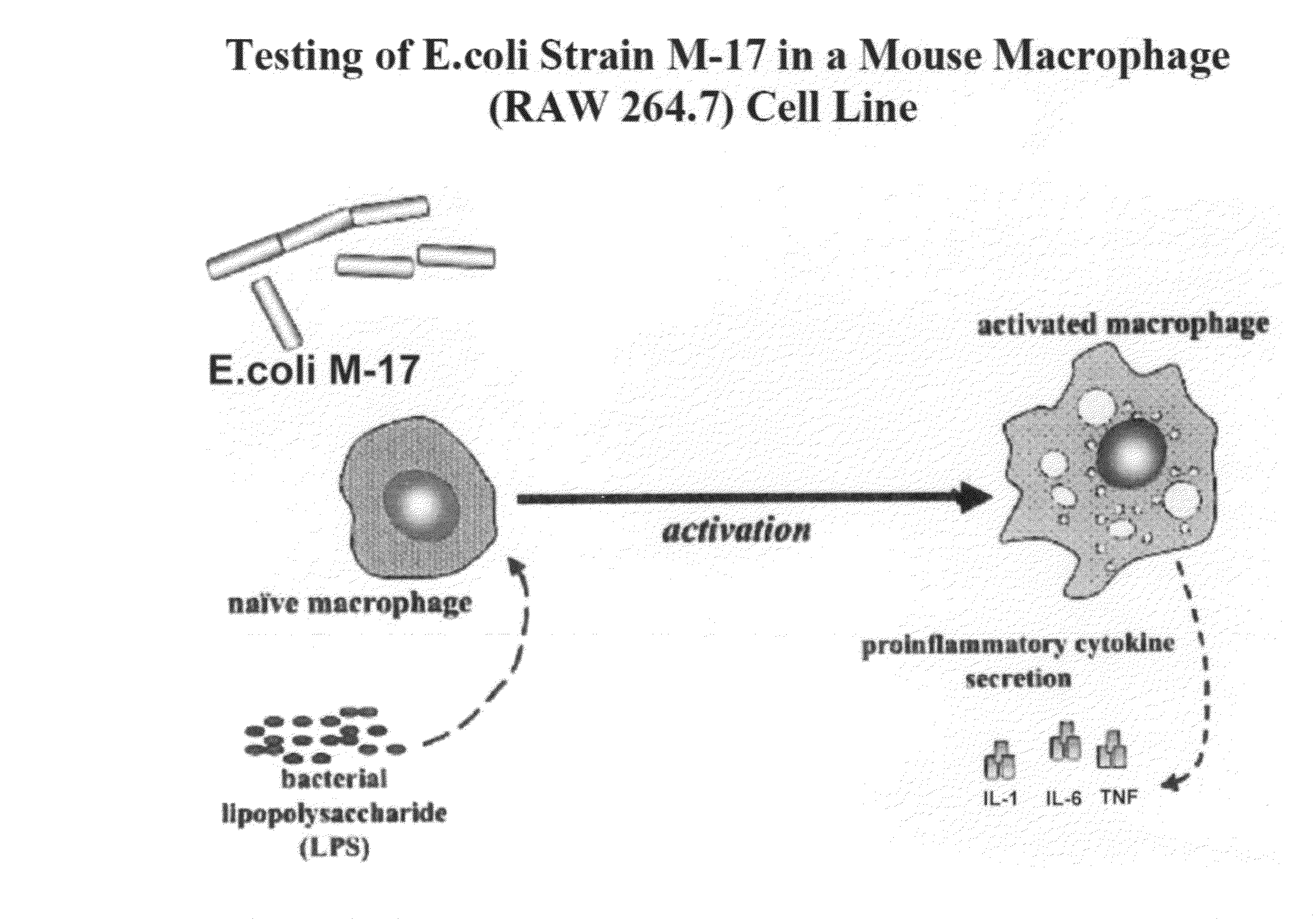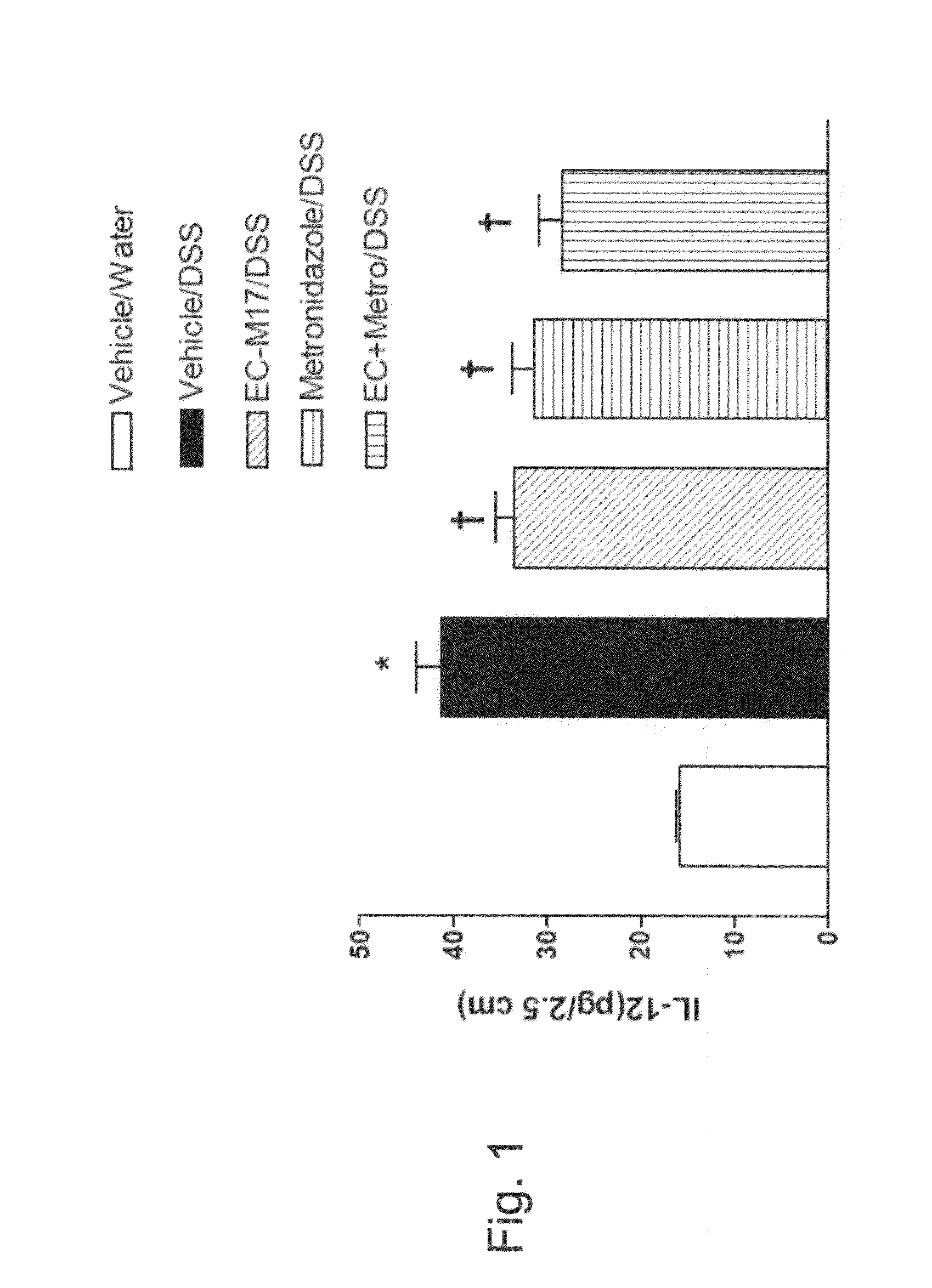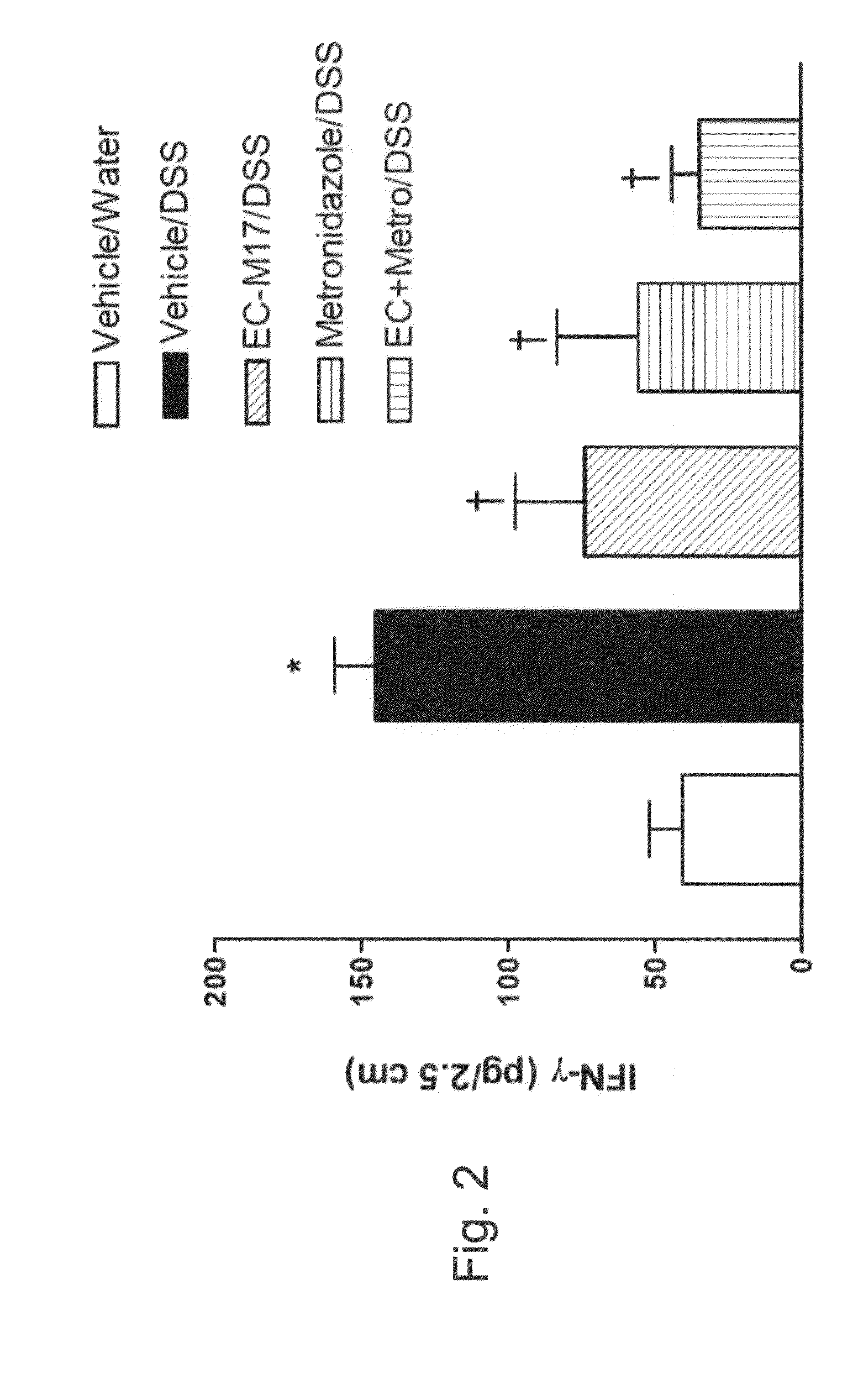Biotherapeutic compositions comprising probiotic escherichia coli and uses thereof
a technology of compositions and probiotics, applied in the field of biotherapeutic compositions, can solve the problems of prior art teaching or suggesting compositions, and achieve the effect of preventing the appearance of meliorating clinical or aesthetical symptoms
- Summary
- Abstract
- Description
- Claims
- Application Information
AI Technical Summary
Benefits of technology
Problems solved by technology
Method used
Image
Examples
example 1
Dose Related Effects of M-17 on Acute DSS-Induced Colitis in Mice
[0261]Three concentrations of M-17 were administered to C57 / BL6 mice: low (5×107 CFU / ml), medium (5×108 CFU / ml) and high (5×109 CFU / ml). Control mice received 0.6% saline. The results are presented in Tables 3-5 below. The effect of M-17 on DSS-induced colitis was measured in terms of the effect on DAIs (Table 3); percentage initial body weight (Table 4); and other parameters of colitis (Table 5).
[0262]As shown in Table 3, there was no significant differences in the DAIs of the different treatment groups during the pre-DSS phase (i.e., days 0, 2, 4 and 6). DAIs increased upon induction of colitis. In saline / DSS treated mice, there was a clear increase in the mean DAI value on study days 12 and 13 (Table 3).
[0263]As further shown in Table 3, both 5×108 CFU / ml and 5×109 CFU / ml of M-17 significantly reduce mean DAI scores when compared to vehicle in DSS-treated mice (34.8%, P9 CFU / ml concentration of M-17 was selected for...
example 2
Comparative Effects of M-17, Metronidazole and M-17 Plus Metronidazole in DSS-Induced Colitis
[0268]5×109 CFU / ml M-17 or 40 mg / kg metronidazole (Metro) was administered to C57 / BL6 mice.
[0269]Prior to the administration of DSS (study day 7), there were no significant differences in the DAI scores among the treatment groups (Table 6). Also, during the pre-DSS phase of the study, only slight differences in water consumption were observed among all the treatment groups. Therefore, through study day 6, all mice tolerated the antibiotic and probiotic treatment regimens relatively well and no major overt effects were evident.
[0270]The administration of 2% DSS to otherwise untreated (vehicle / DSS) C57 BL / 6 mice resulted in significant increases in DAI scores on days 12 and 13 when compared with vehicle-treated mice that did not receive DSS (vehicle / water; Table 6). However, the increased DAI that was found in vehicle-treated mice was less prominent in mice treated with M-17, metronidazole, an...
example 3
Combined Effects of M-17 and Metronidazole Treatment on DSS-Induced Colitis
[0273]The effects of M-17 and Metronidazole, separately and in combination, on DSS-induced colitis were studied. The results are presented in FIGS. 1-6, and in Table 7 below. As shown in Table 7, either of these treatments alone reduced colonic levels of IL-12, IL-6, IL-1β, and IFN-γ, as well as changes in DAI, colon length, colon weight, MPO activity, and colonic histology score. No reductions in levels of IL-10 or IL-4 were seen. A greater decrease in parameters of colitis was observed with combined M-17 and metronidazole treatment, indicating a synergistic effect of this combined treatment.
[0274]As shown in FIG. 1, the administration of 2% DSS led to an increase of about 2.6 fold in the mean colonic IL-12 level. On study day 13, mice treated with M-17, metronidazole, or a combination thereof exhibited significantly lower levels of colonic IL-12 as compared to saline treated mice. In mice treated with both ...
PUM
| Property | Measurement | Unit |
|---|---|---|
| Volume | aaaaa | aaaaa |
| Dimensionless property | aaaaa | aaaaa |
| Mass | aaaaa | aaaaa |
Abstract
Description
Claims
Application Information
 Login to View More
Login to View More - R&D
- Intellectual Property
- Life Sciences
- Materials
- Tech Scout
- Unparalleled Data Quality
- Higher Quality Content
- 60% Fewer Hallucinations
Browse by: Latest US Patents, China's latest patents, Technical Efficacy Thesaurus, Application Domain, Technology Topic, Popular Technical Reports.
© 2025 PatSnap. All rights reserved.Legal|Privacy policy|Modern Slavery Act Transparency Statement|Sitemap|About US| Contact US: help@patsnap.com



